Why the world’s most controversial megaproject may never be finished
The lowdown on the world's most contentious megaproject
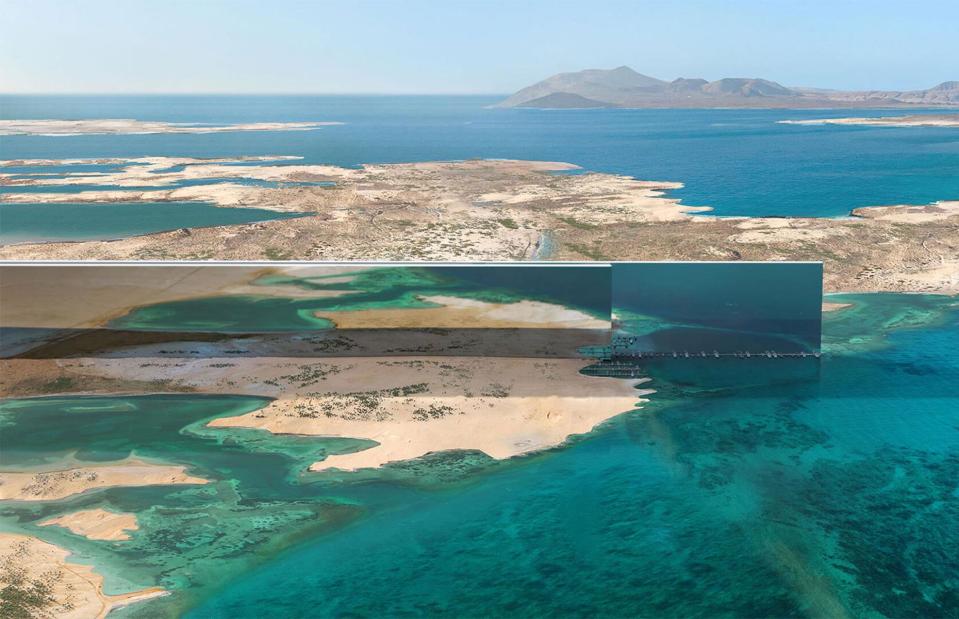
Courtesy Neom
The stuff of sci-fi, Neom is the jaw-dropping urban development currently taking shape in the Saudi Arabian desert.
Announced in 2017 and expected to cost half a trillion dollars, the mind-boggling megaproject is almost the size of Belgium and consists of 10 futuristic regions. Among them is The Line (pictured), a mirrored linear megacity with a projected population of nine million.
But is Neom an "ecological and moral atrocity" (to quote Dezeen) or an eco haven? Read on to find out why it's so controversial – and to discover whether the project will ever be completed. All dollar amounts in US dollars.
Neom launches
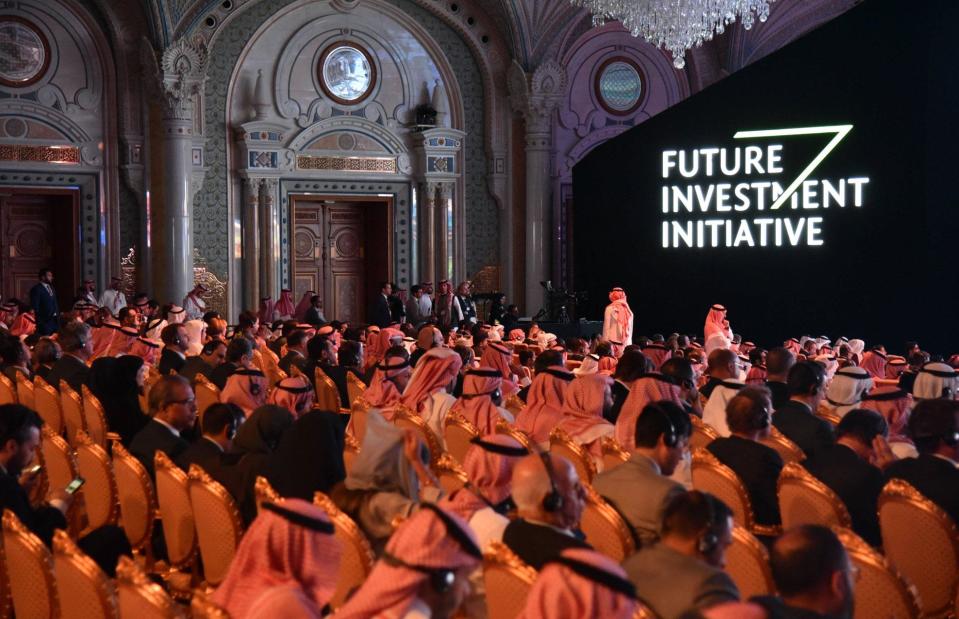
Imago/Alamy
Neom was unveiled to great fanfare in October 2017 at the Future Investment Initiative conference in Riyadh.
The supposedly carbon-neutral megaproject is part of a major push to diversify the Saudi economy and wean the nation off oil, which makes up the lion's share of its exports and government revenue. Neom is spearheaded by Crown Prince Mohammed bin Salman, the driving force behind Saudi Arabia's move away from fossil fuels.
Saudi Vision 2030
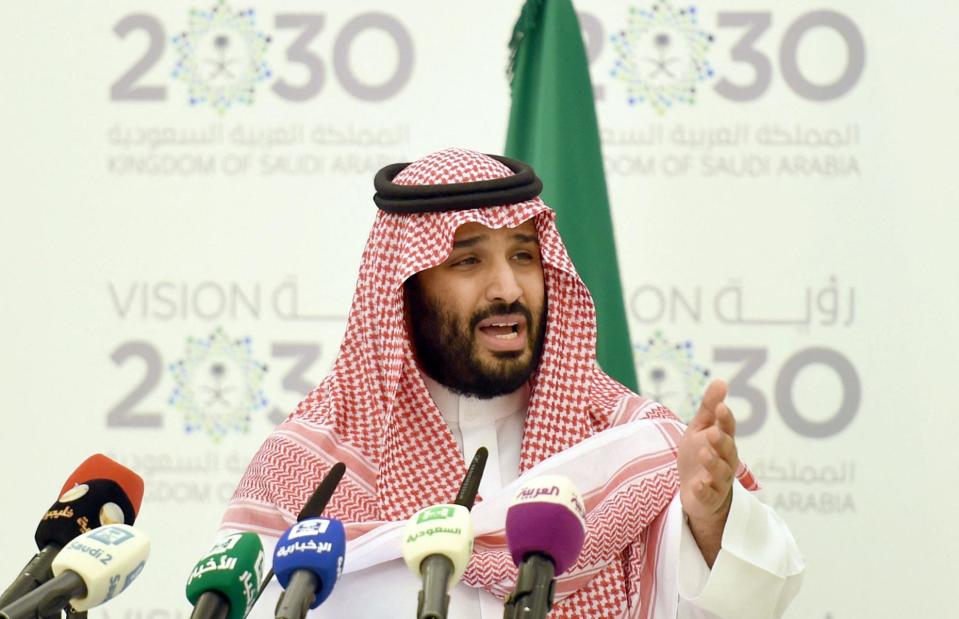
FAYEZ NURELDINE/AFP via Getty Images
The megaproject has its origins in the Saudi Vision 2030 programme, launched by bin Salman in January 2016
This wide-ranging plan to reduce the nation's dependency on oil has prompted modernising social reforms, including expanding women's rights, opening up the conservative country's economy, and attracting foreign investment.
The programme is seeking to develop tourism, renewable energy, sports, entertainment, hi-tech manufacturing, and other potentially lucrative sectors via a number of megaprojects. Urban area Neom is the flagship offering.
What's in a name?
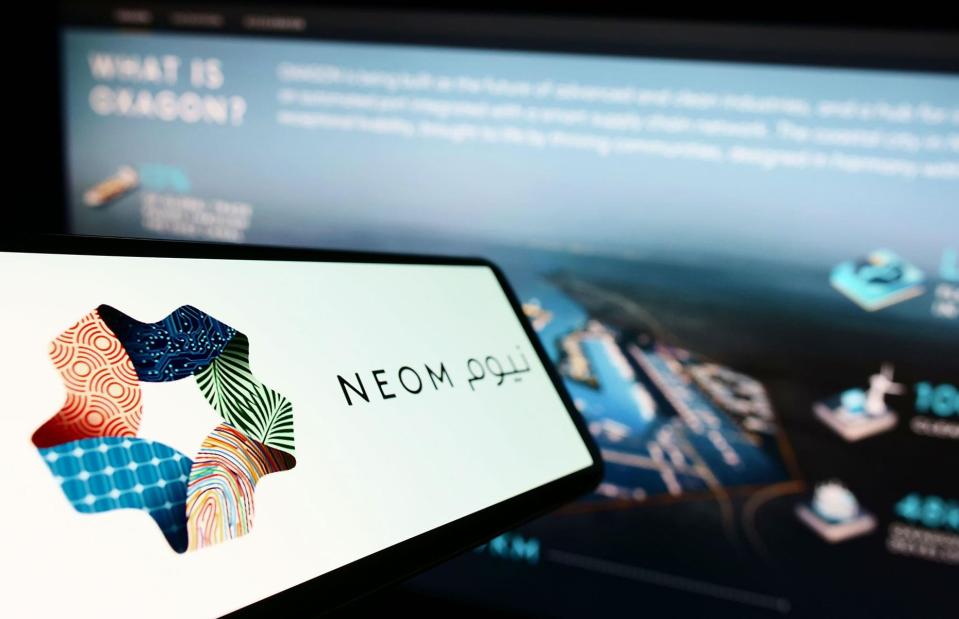
Timon Schneider/Alamy
Experts came up with as many as 2,000 names for the megaproject before the board of directors created a shortlist of 150, eventually whittling it down to one.
Neom is a portmanteau that means "new future". The first three letters are the Ancient Greek prefix "neo" ("new"), while the letter "m" stands for "mustaqbal", an Arabic word for "future". Another added bonus? It's also the first letter of the Crown Prince's first name, of course.
Neom's independent status
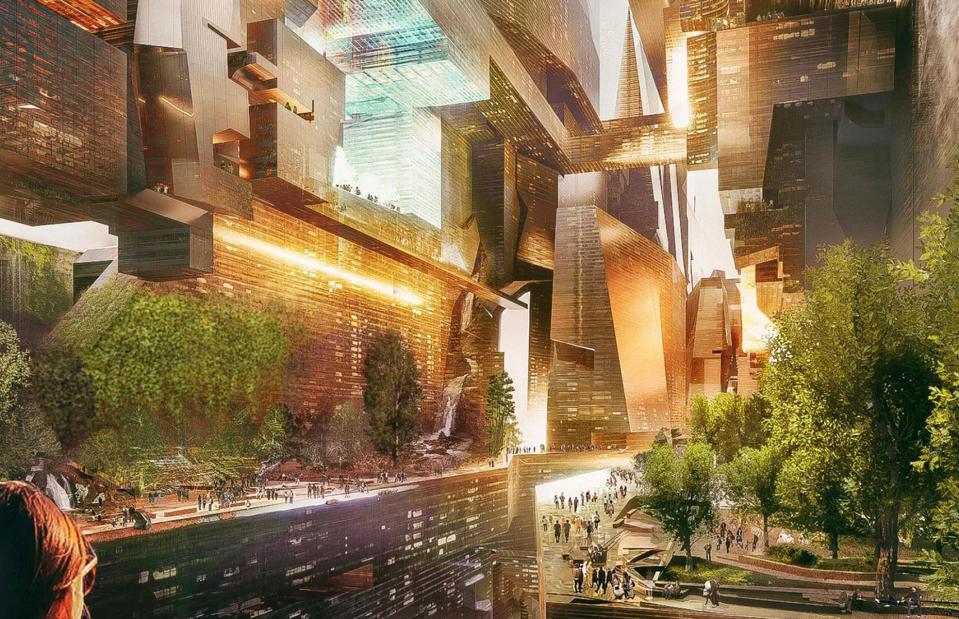
Courtesy Neom
Neom will function as an independent nation that operates outside the conservative Saudi state, with its own tax and labour laws, economic zone, and judicial system. It's even going to have its own airline.
The Saudi government is keen to create a seemingly liberal utopia that will attract the global elite – and, more importantly, their investment money.
Neom's financing
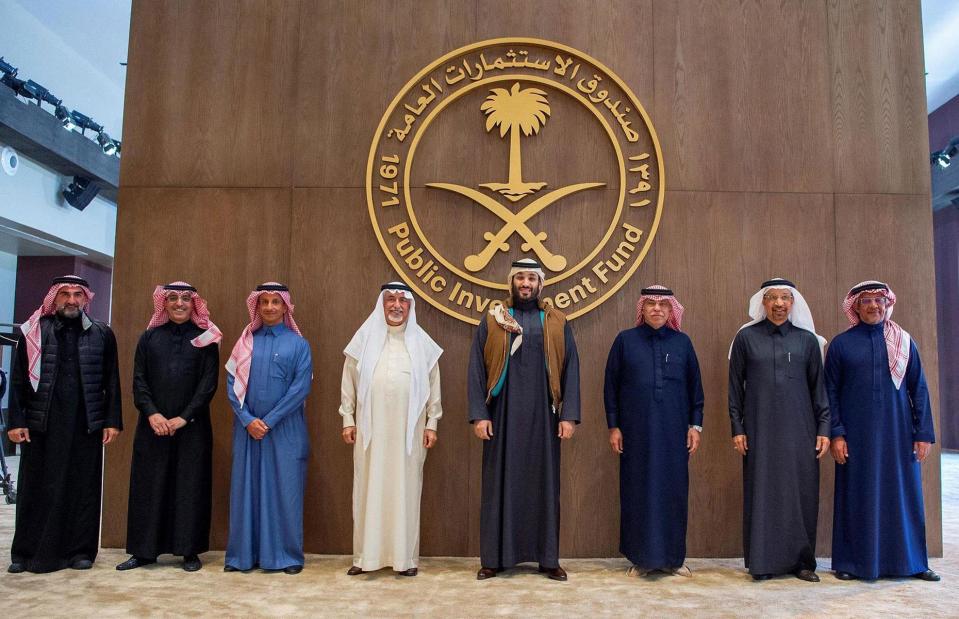
Abaca Press/Alamy
Bankrolling the $500 billion (£394bn) megaproject is no mean feat. Around half of the $320 billion (£252bn) required for the first phase of the project, scheduled for completion in 2030, is being provided by Saudi Arabia's Public Investment Fund. Essentially, this is money the nation has earned from fossil fuel exports.
The remainder of the funding is expected to come from Neom's initial public offering (IPO), which has been planned for later this year, as well as via other sovereign wealth funds in the Middle East and overseas investors.
Enticing foreign capital is crucial to the success of the megaproject, and for Saudi Vision 2030 as a whole.
Neom's big-name collaborators
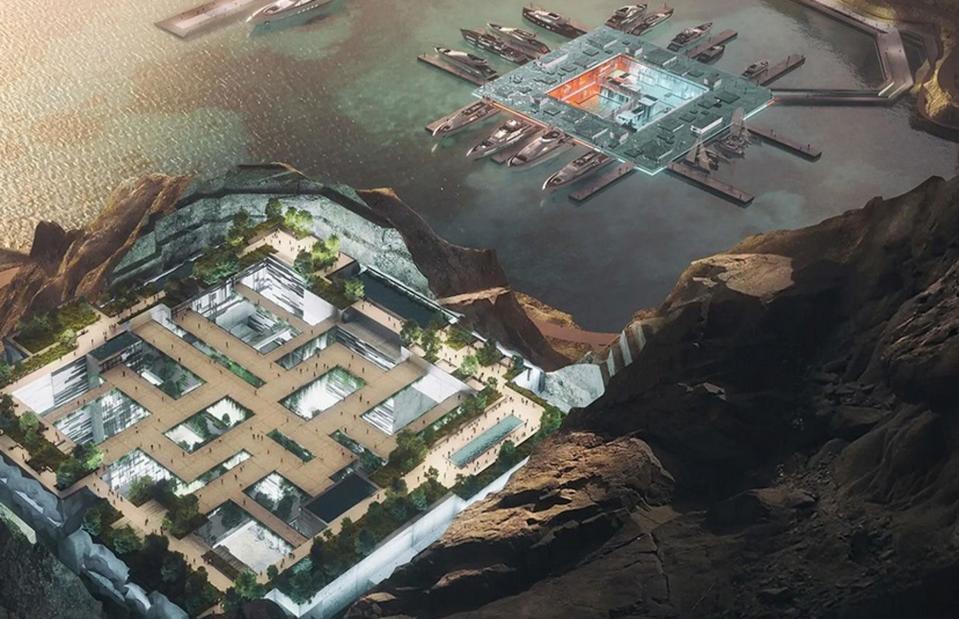
Courtesy Neom
To boost the credibility of the megaproject, the Saudi government has spared no expense in hiring the global crème de la crème to design and deliver Neom.
Some of the world's leading architectural studios are working on the urban development, including the UK's Zaha Hahid Architects, Denmark's BIG, and US heavyweight Morphosis.
Engineering titans Parsons and Atkins have also signed up. Top Hollywood art directors, including Guardians of the Galaxy designer Olivier Pron and The Dark Knight's Nathan Crowley, have even been called upon to create the wow-factor renders.
Neom's 10 regions
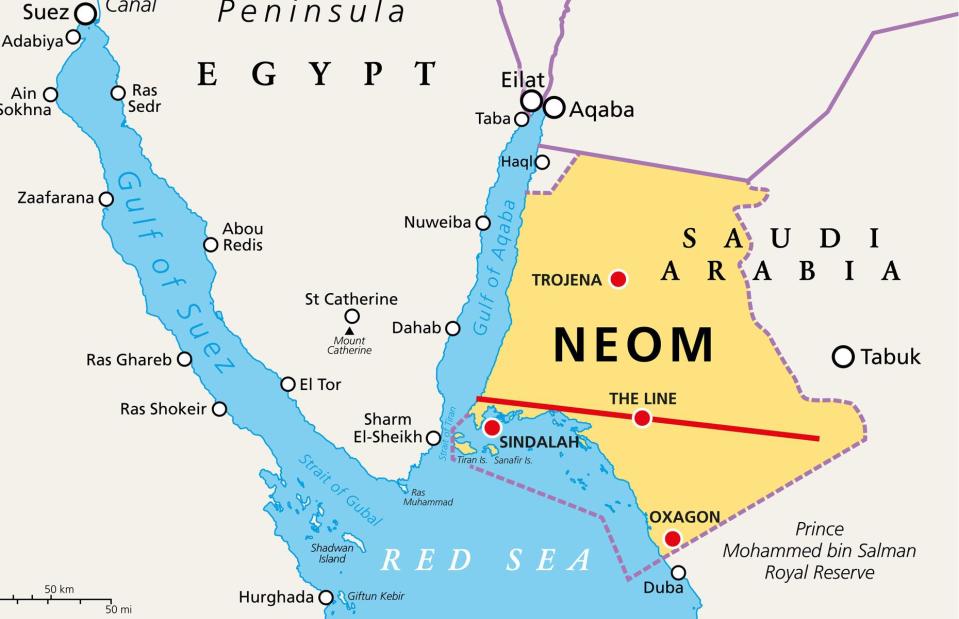
Peter Hermes Furian/Alamy
Neom will comprise 10 regions covering an incredible 10,600 square miles (26,500km²) in northwestern Saudi Arabia's Tabuk Province, which borders the Red Sea and Gulf of Aqaba. The site is around the size of Albania and almost as large as Belgium.
Neom's proposed regions include an island beach destination, mountain ski resort, floating industrial port city, “ultra-luxury upside-down skyscraper”, and The Line, a mirrored linear city that's arguably the most ambitious – not to mention the most expensive – part of the project. Powered entirely by renewables, according to the marketing blurb, all regions purportedly focus on conservation and sustainability.
As we'll soon discover, Neom's eco credentials have been widely questioned. But before we get to that, let's explore the 10 new regions that will change the face of the desert forever...
Sindalah
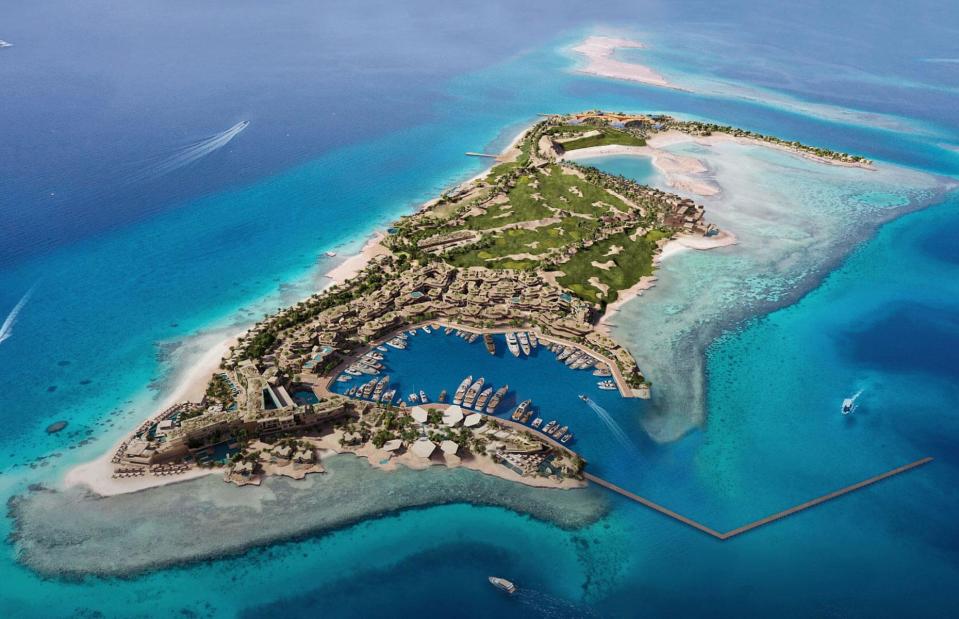
Courtesy Neom
Scheduled to open later this year, Sindalah is the first of the 10 regions slated for completion. It's expected to welcome 2,400 visitors per day by 2028.
Billed as a playground for the world's jet set, the seahorse-shaped artificial Red Sea island is the handiwork of hyper-luxe Italian yachting design studio Luca Dini Design and Architecture.
Envisaged as a global superyacht hub, the four million-square-foot (371,612m²) isle features a stunning marina and yacht club, three swish hotels, and a nine-hole golf course. That's in addition to a wellness centre, a sports training complex with an Olympic-sized pool, high-end retail, gourmet restaurants, and more.
Trojena
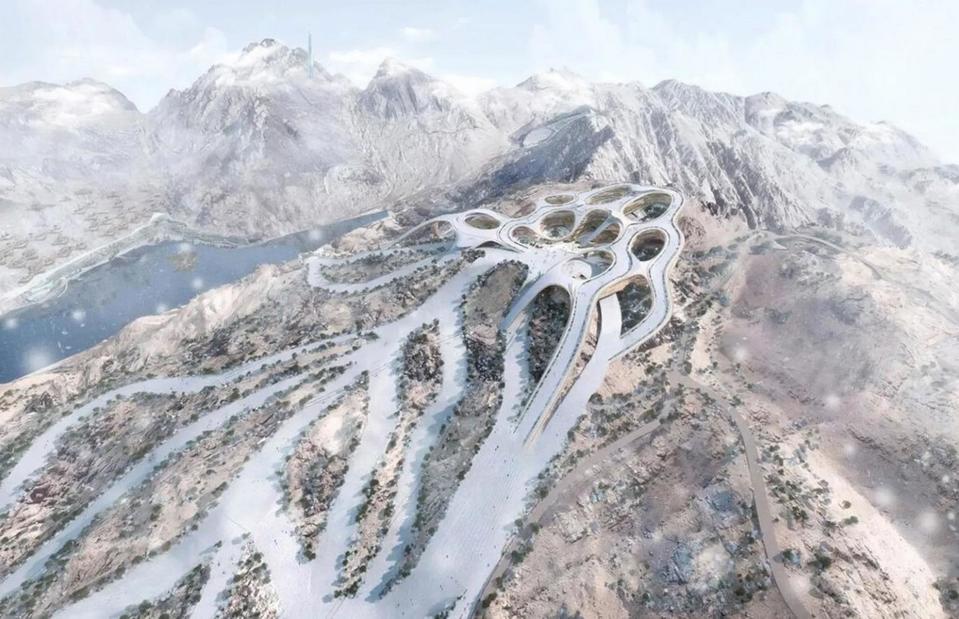
Courtesy Neom
An Alpine extravaganza in Tabuk's lofty Sarawat Mountains, Trojena is second on the list. The opening date is scheduled for late 2026, well in time for the 2029 Asian Winter Games, which it will host.
Trojena will be the first outdoor ski resort in the Gulf and the most advanced in the world. Set to house 7,000 permanent residents and host 700,000 visitors a year, the region encompasses an artificial lake and ski resort by Germany's LAVA studio, as well as a sensational 1,038-foot (330m) "vertical village" tower courtesy of Zaha Hadid Architects.
Around 75% of the snow required for the resort's innovative all-weather ski slopes will be machine-made – although it will be created in the most sustainable way possible, according to Trojena's executive director Philip Gullett.
Oxagon
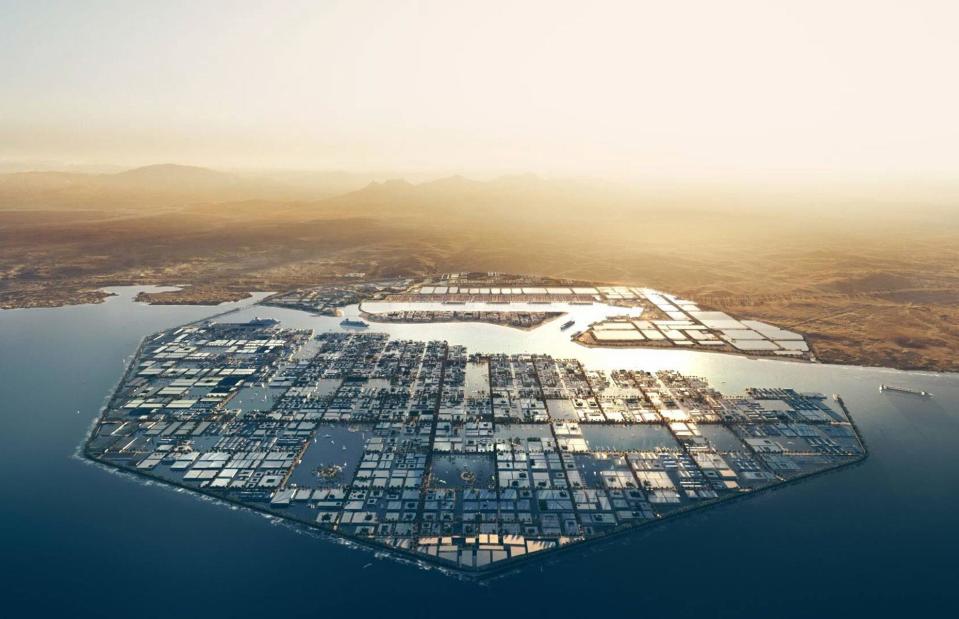
Courtesy Neom
The third Neom region due for completion, Oxagon should be fully up and running by 2030.
Located on the Red Sea coast, this octagonal wonder is a visionary industrial city made up of hi-tech factories, logistics sites, and the first-ever port with a fully integrated supply chain system. It will sit on the world's largest floating structure.
Designed by Danish studio BIG, the future-focussed 18.5-square-mile (48km²) development is slated to feature a cruise terminal, marine research centre, innovation campus, and waterfront residential zones. Oxagon is also set to be home to the largest green hydrogen production facility on the planet.
Norlana
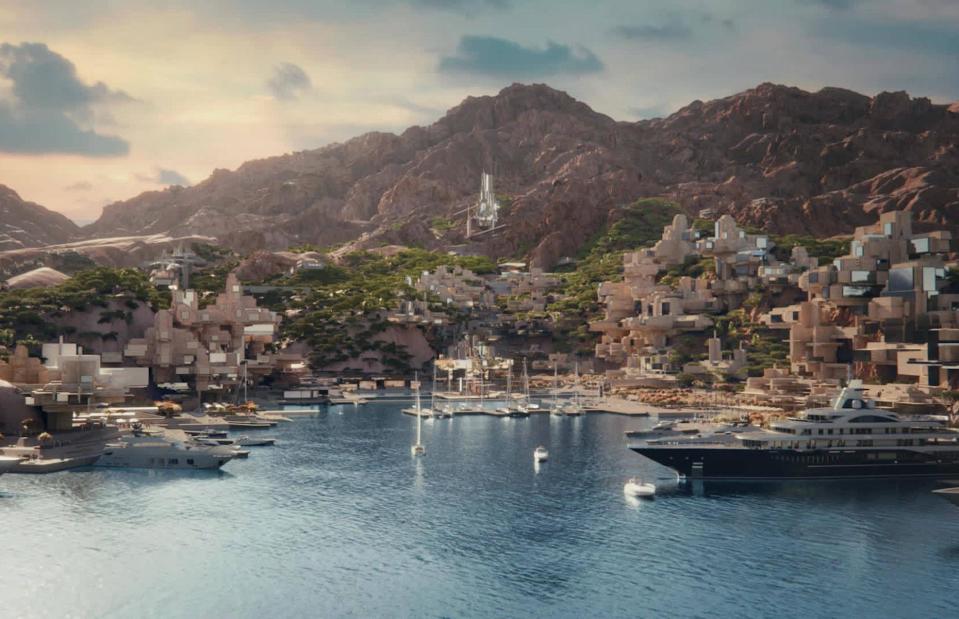
Courtesy Neom
Thematically similar to Sindalah, Norlana is a cutting-edge coastal wellness community for 3,000 moneyed residents located on the shores of the Gulf of Aqaba. Dreamed up by Hong Kong-based architecture firm 10 Design, Norlana will rock hundreds of deluxe apartments, villas, and mansions together with two hotels, cleverly designed to blend in with the surrounding landscape.
Like Sindalah, the region is poised to be a superyacht magnet thanks to its world-class marina and superyacht members club. With the emphasis on healthy living, Norlana's sports amenities are set to be top-notch, including an equestrian and polo centre, an 18-hole golf course, and a tennis club.
Norlana is in its early stages of development and a completion date has yet to be announced.
Leyja
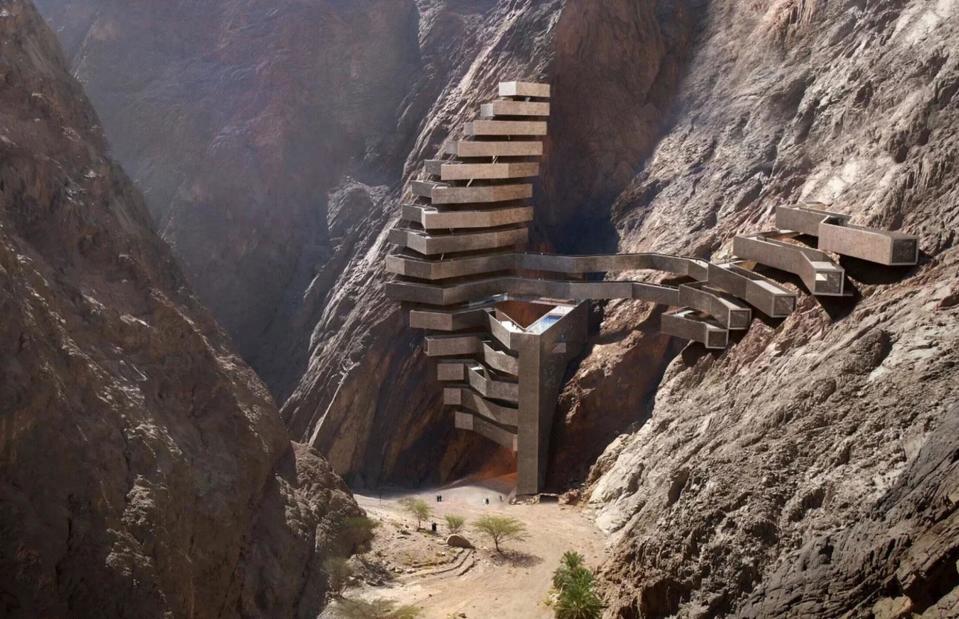
Courtesy Neom
Leyja is purported to offer the ultimate sustainable travel experience. Located in a pristine mountainside valley near the Gulf of Aqaba, the region will be graced with three luxury 40-room boutique hotels designed by superstar architects Chris van Duijin, Shaun Killa, and Mario Cucinella.
Crafted from eco materials, the hotels will be designed to blend in with their surroundings, even more so than Norlana's structures, while 95% of Leyja will be left untouched to preserve the valley's ecology.
Guests will be able to enjoy hiking, rock climbing, and other adventurous activities, with one of the hotels devoted to wellness and all three featuring fine-dining options. As with Norlana, no completion date has been set for Leyja.
Siranna
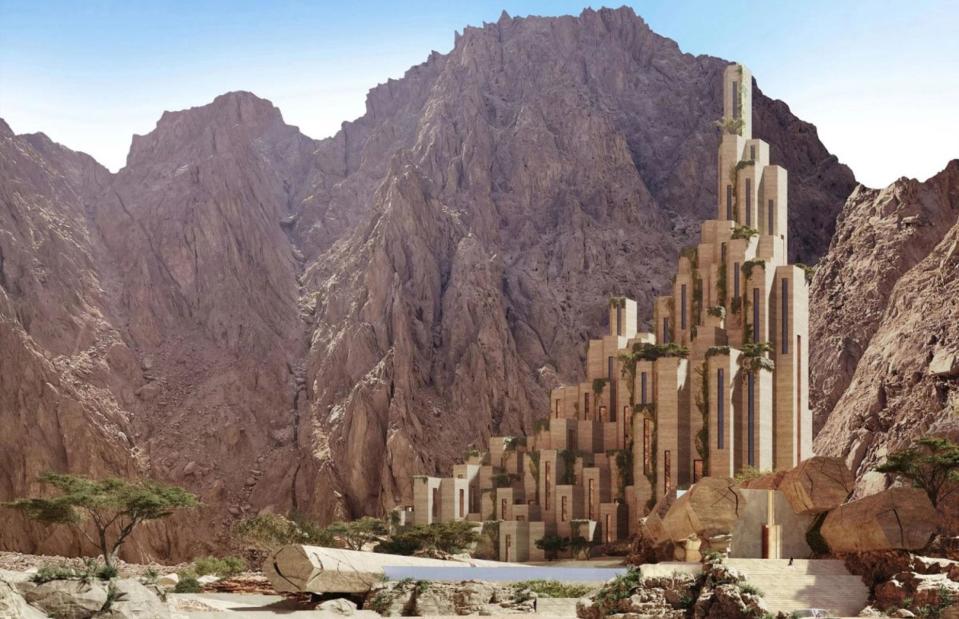
Courtesy Neom
Next up is Siranna, situated on the rugged Gulf of Aqaba coastline. Neom's principal haven of relaxation, this region is all about unwinding.
At its heart will be a 65-room hotel designed by global studio Woods Bagot. Accessible only by sea, the sustainable structure will be made up of hexagonal pillars that mimic the surrounding mountains.
Siranna is set to feature a blissful beach club, as well as a wealth of spas and other wellness facilities. But just in case you're reaching for your credit card to make a booking, no completion date has been announced for the project just yet.
Epicon
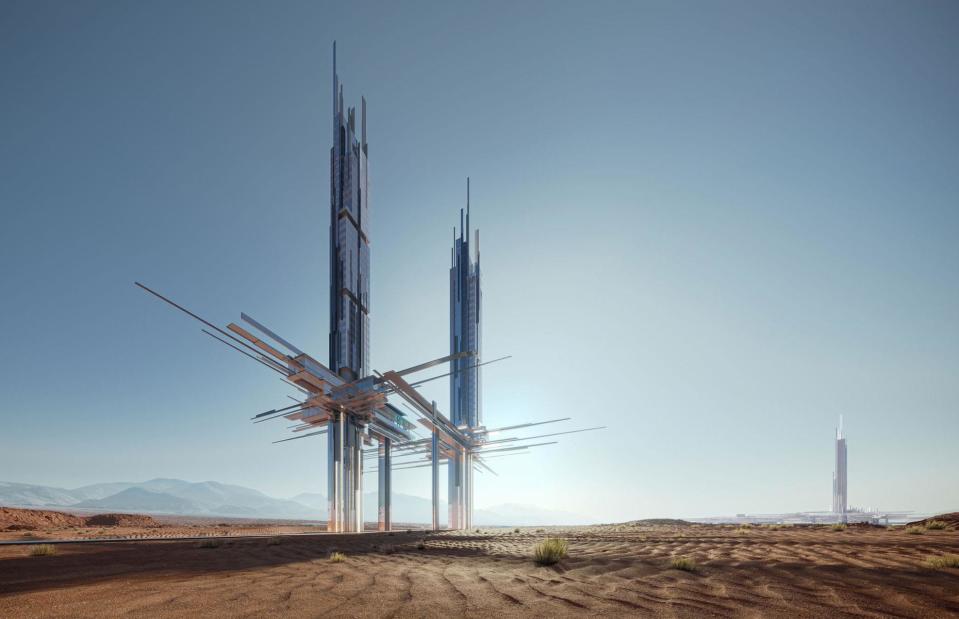
Courtesy Neom
Located amid desert dunes on the Gulf of Aqaba, Epicon will have two hyper-futuristic towers connected by a jagged platform at its crux. The design has got to be among Neom's most eye-catching and intriguing structures and is the work of 10 Design.
Soaring as high as 902 feet (275m), the towers will house a 41-room hotel and numerous plush residences. Epicon will also feature a beach resort with a 120-room hotel and 45 villas.
The region will be packed with state-of-the-art amenities, which will likely become its main draw, although there's no indication when it will be finished.
Utamo
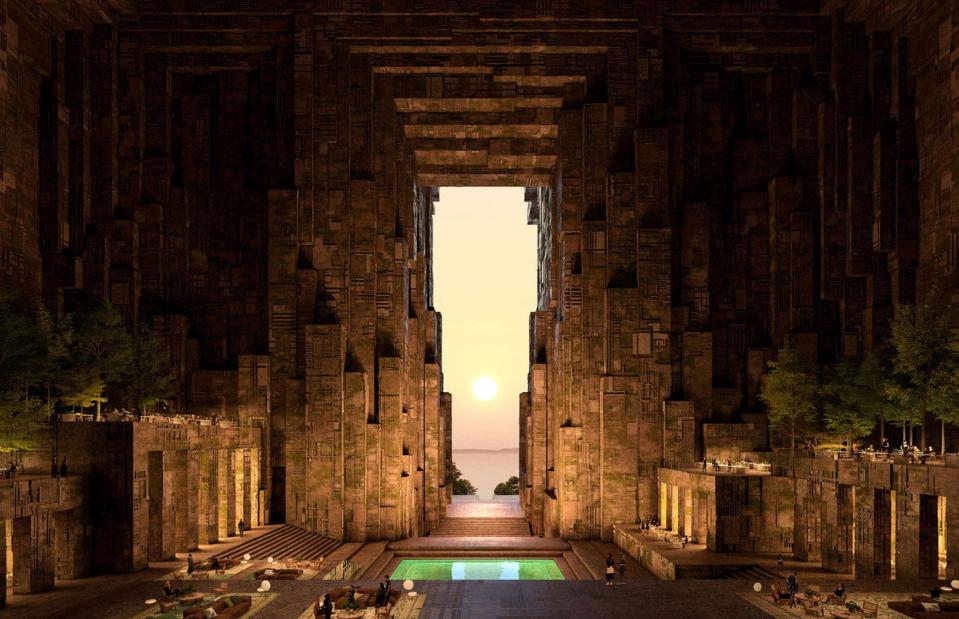
Courtesy Neom
Utamo is a dazzling new "theatre of the future" situated on the more rugged part of the Gulf of Aqaba coast. It will provide a dramatic backdrop to an array of immersive entertainment performances and art experiences.
Spain's Ricardo Bofill Taller de Arquitectura has designed a remarkable events space "cocooned in a mountain" (to quote Inavate), which will be accessed by a multi-sensory garden promenade and spectacular entrance hall that stands 210 feet high (64m).
The main hall will have capacity for 2,600 guests, and Utamo will incorporate other performance spaces, VIP lounges, and a number of restaurants. Again, a completion date for the project has yet to be announced.
Aquellum
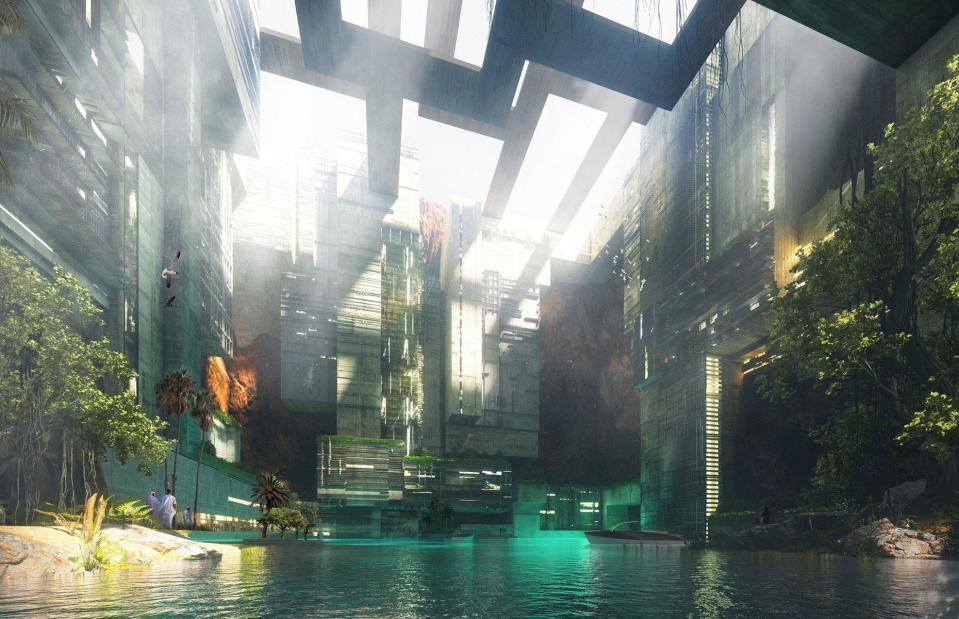
Courtesy Neom
The last of the 10 Neom regions that have been announced, Aquellum is an extraordinary upside-down skyscraper located in a hollowed-out 1,476-foot (450m) mountain on the Gulf of Aqaba coastline.
Perhaps the weirdest and most futuristic of Neom's regions, the project, designed by LAVA and Name Architecture, will offer an immersive subterranean digital community integrated into the metaverse, with creativity as its main focus.
Visitors will enter on a specially designed vessel via an underground canal, arriving at a breathtaking underwater open square. Leading off from this will be a luxury hotel and apartments, gourmet restaurants, high-end boutiques, a cloud garden, and various innovation spaces. Once again, a completion date for the project is still to be confirmed.
The Line
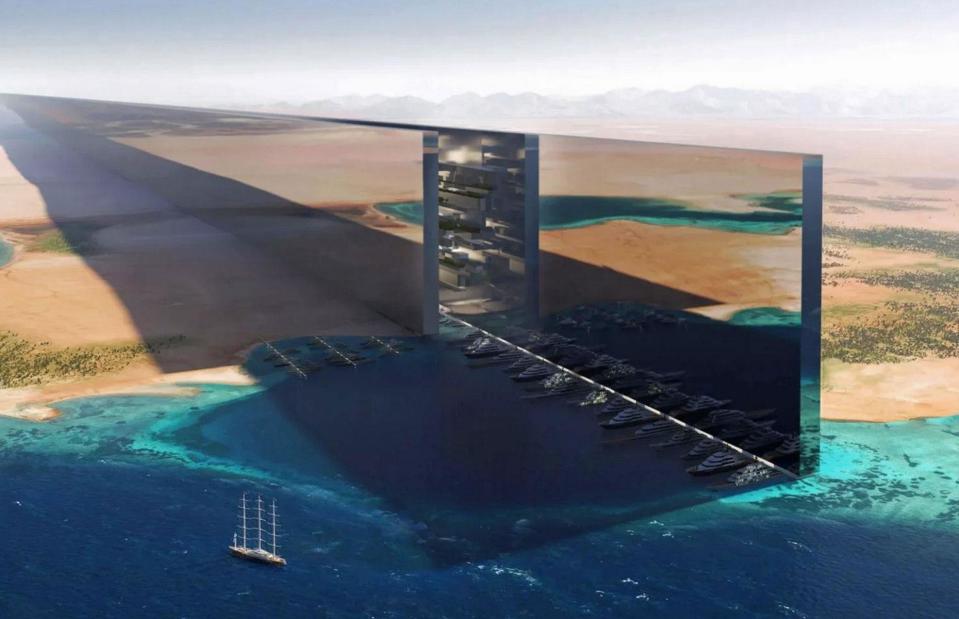
Courtesy Neom
Neom's biggest and most ambitious project by far, The Line is a mirrored linear megacity consisting of a pair of hollow twin skyscrapers that will each measure 1,640 feet tall (500m), 656 feet wide (200m), and a staggering 106 miles long (170km).
Conceptualised by designers including the US studio Morphosis, the bizarrely narrow but incredibly tall and long structure will eventually be home to nine million people, roughly equivalent to the population of London.
All local amenities will be within a five-minute walk, while inhabitants will never be more than a two-minute stroll away from nature.
The Line
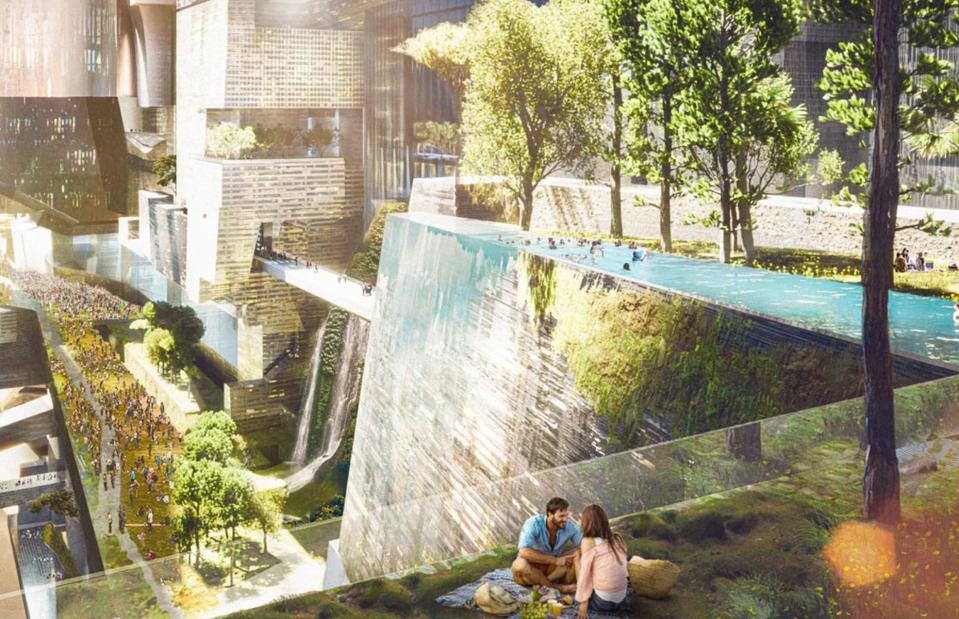
Courtesy Neom
Artificial intelligence (AI) is assisting with the design of the city, which will be assembled in modular blocks.
Fully climate-controlled for pleasant weather all year round, the skinny metropolis is set to be integrated with smart tech and features a number of innovations that haven't even been invented yet. Among them are a giant artificial moon, flying taxis, robot maids, and a beach with glow-in-the-dark sand.
With no cars or roads planned, residents will get around the city by bike and will be able to travel from end-to-end in just 20 minutes via an ultra-fast hyperloop (or similar), which will be called The Spine. The idea is feasible in theory, although The Spine is still very much on the drawing board at this stage.
The Line
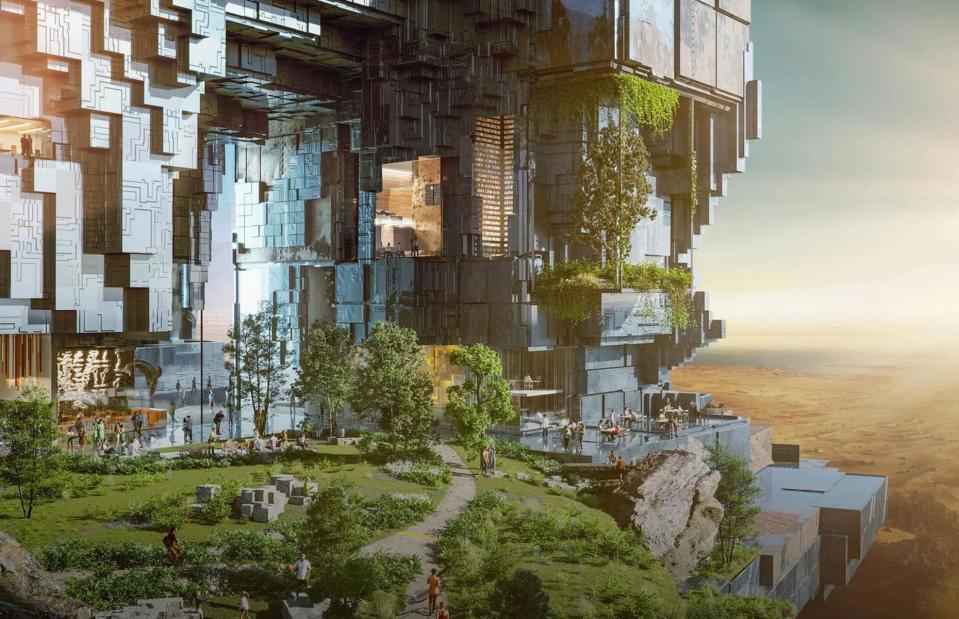
Courtesy Neom
Sustainability is The Line's primary goal. As well as being car-free, the city will be powered exclusively by renewables, and its relatively small physical footprint will have minimal ecological impact – or so the promotional material claims.
Construction on the site is underway, although The Line isn't expected to be completed in its entirety until 2039 at the earliest. The Line's first district, the Hidden Marina, is set to be finished by 2030 and is currently the world's largest piling project.
Neom criticism
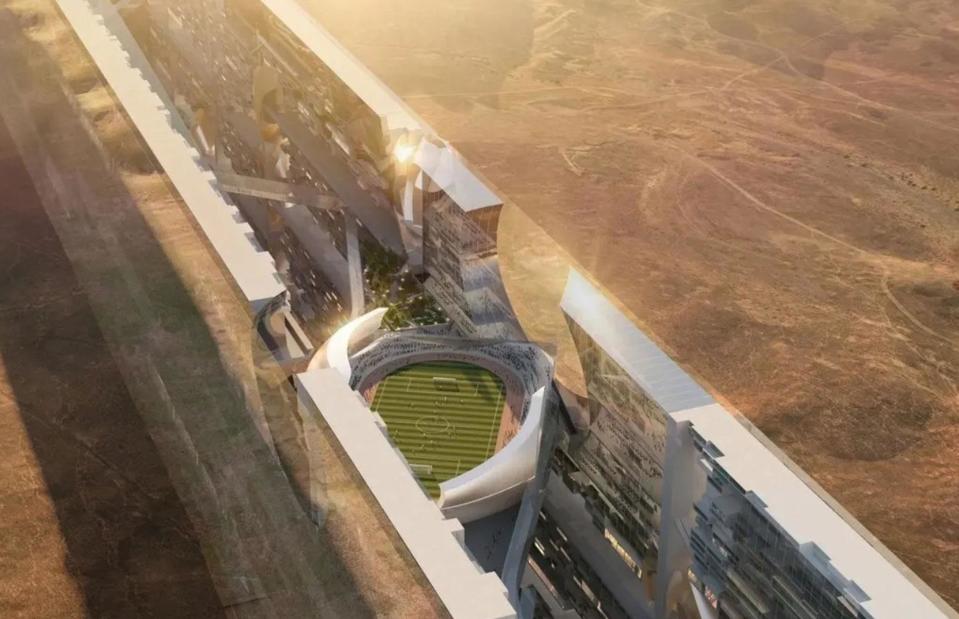
Courtesy Neom
Criticism has come flying in thick and fast since the Neom concept was first revealed back in 2017.
Activists have called out a number of alleged human rights abuses linked to the megaproject, and despite the developers' assurances, environmental campaigners have slammed the grand scheme as a greenwashed eco nightmare. Writing in Dezeen, eminent urbanist Adam Greenfield has labelled it an "ecological and moral atrocity".
Concern has also been raised over Neom's liveability and potential to become a mass-surveillance dystopia, as well as the prospect of the megaproject becoming a prime terrorist target. On top of all this, experts have cast doubt over its feasibility and are questioning whether the work will ever be completed.
Neom's alleged greenwashing and eco issues
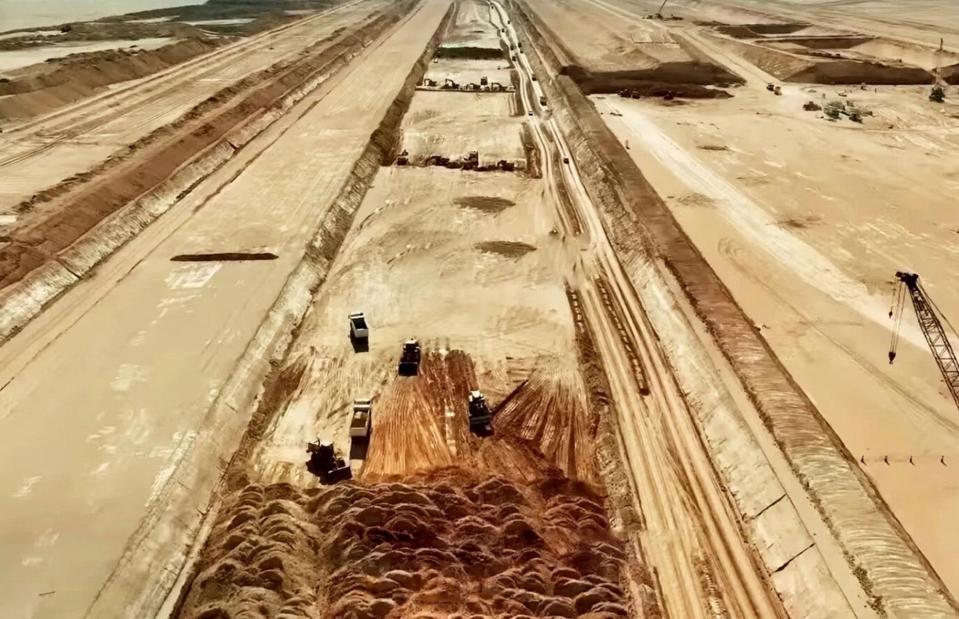
Courtesy Neom
Neom's supposed eco credentials have drawn much criticism. The megaproject has been derided as a cynical attempt by the Saudi authorities to greenwash their not-so-rosy environmental record, with experts highlighting a litany of issues that undermine Neom's eco-friendliness.
For instance, Philip Oldfield, head of the School of Built Environment at the University of New South Wales, has told Dezeen that the enormous environmental cost of The Line will cancel out any potential benefits. In fact, he estimates that a bewildering 1.8 billion tonnes of embodied carbon could be produced during the city's construction, the equivalent of more than four years of the UK's entire emissions.
Neom's alleged greenwashing and eco issues
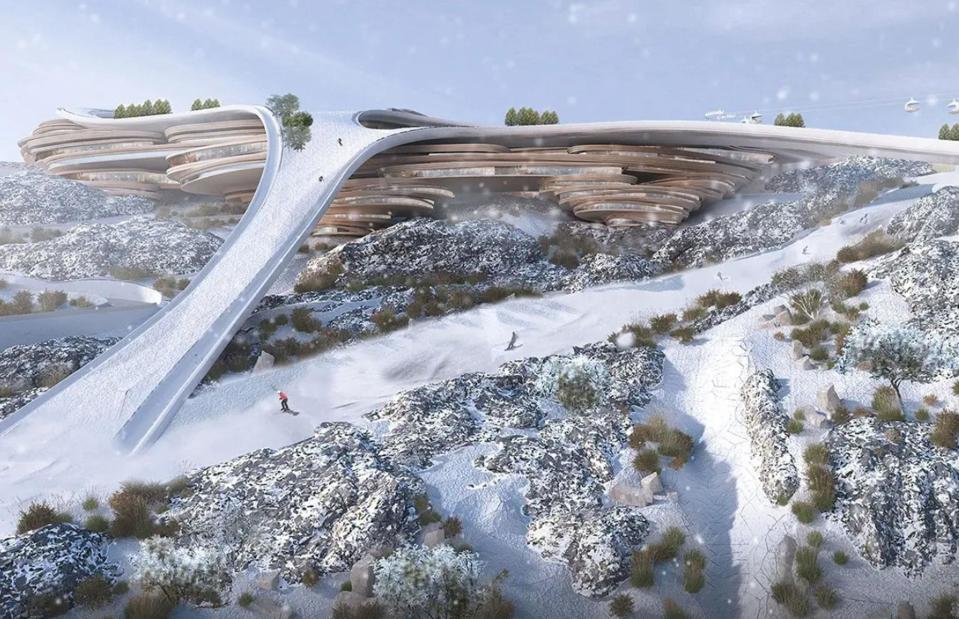
Courtesy Neom
Greenpeace has spoken out against Trojena, branding the ski destination "dangerous". The environmental group argues the development is hugely damaging to the local ecosystem and an inherently wasteful and unsustainable project.
"Just because something is powered by renewables doesn't make it sustainable or environmentally friendly," explains Greenpeace's Ahmed El Droubi. "There are many other factors."
Neom's alleged greenwashing and eco issues
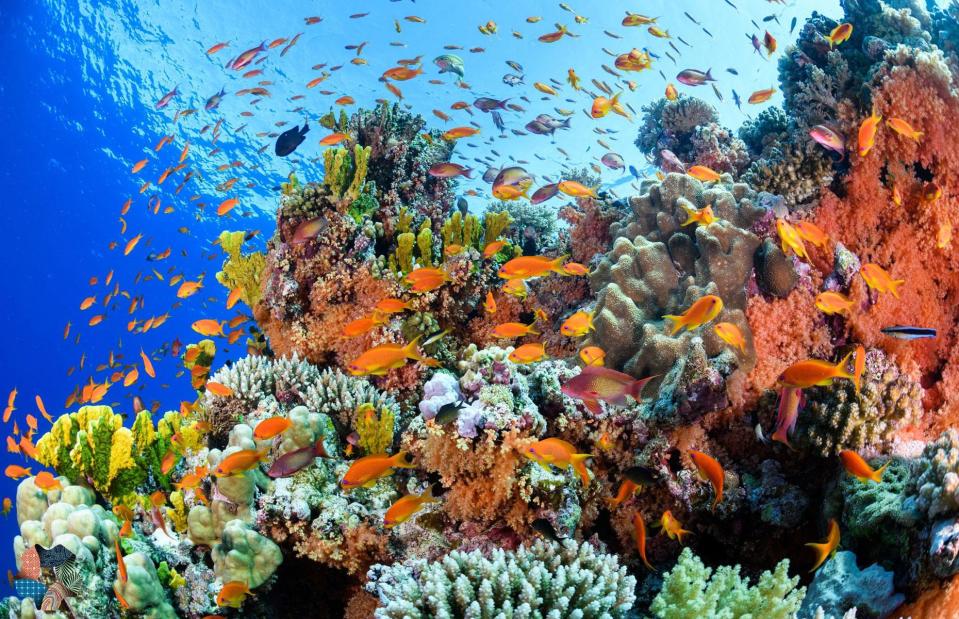
Courtesy Neom
Neom requires a myriad of emerging tech to back up its eco aspirations, including renewable energy-powered water desalination, which to date has never been successful. This puts its green objectives on very shaky ground.
Then there's also Neom's potential impact on local wildlife. While the megaproject has some positives, such as the creation of the world's largest coral garden and other reef preservation projects, construction of this scale will undoubtedly alter and damage habitats and ecosystems.
Neom's alleged greenwashing and eco issues
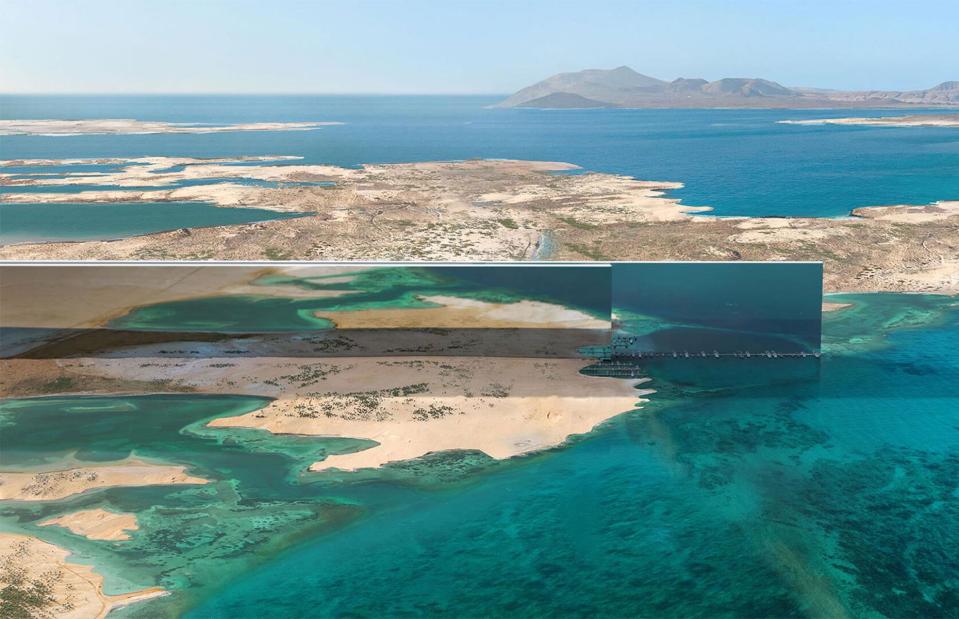
Courtesy Neom
Animal experts worry The Line's colossal mirrored façade could present a fatal obstacle to migrating birds, which could be killed in their millions.
Animals migrating via land may be luckier as The Line will reportedly feature curated migration corridors on the ground level.
Environmentalists have also expressed concern about the potential for damaging invasive species to gain a foothold in Saudi Arabia via the development, given the vast quantities of imported plants the megaproject will use.
Neom's security risks
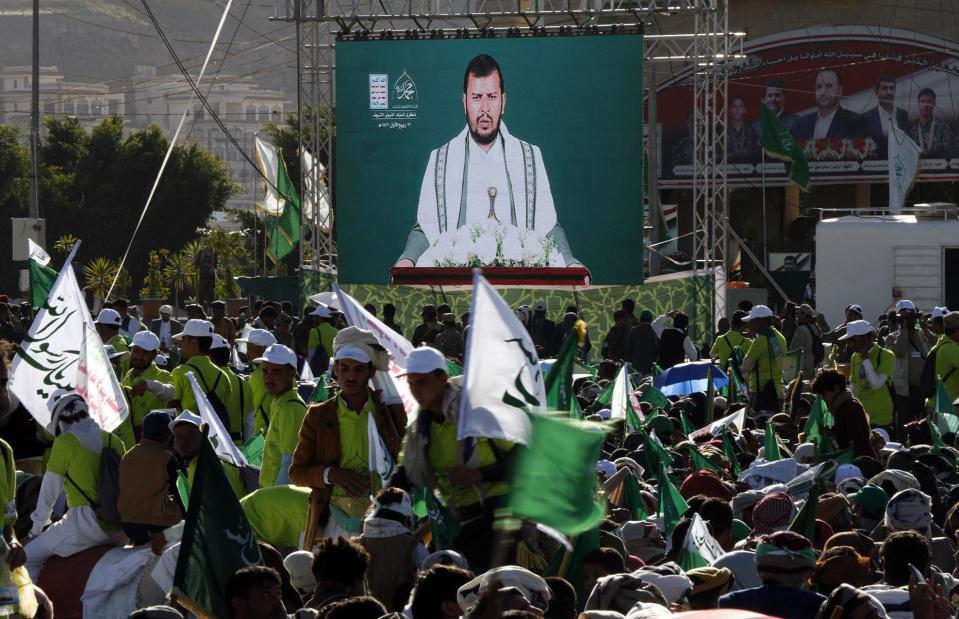
Mohammed Hamoud/Getty Images
What's more, critics have pointed out the potential for Neom to become a magnet for terrorist activity, with The Line's sole mode of transportation flagged as particularly vulnerable. With no other system to rely on, an attack on The Spine could take out the entire city for months on end – and the threat is genuine.
The supreme leader of Yemen's Iran-backed Houthi rebel group, which has been busily attacking shipping in the Red Sea, has already threatened to target Neom, according to The New Arab.
Mass-surveillance dystopia?
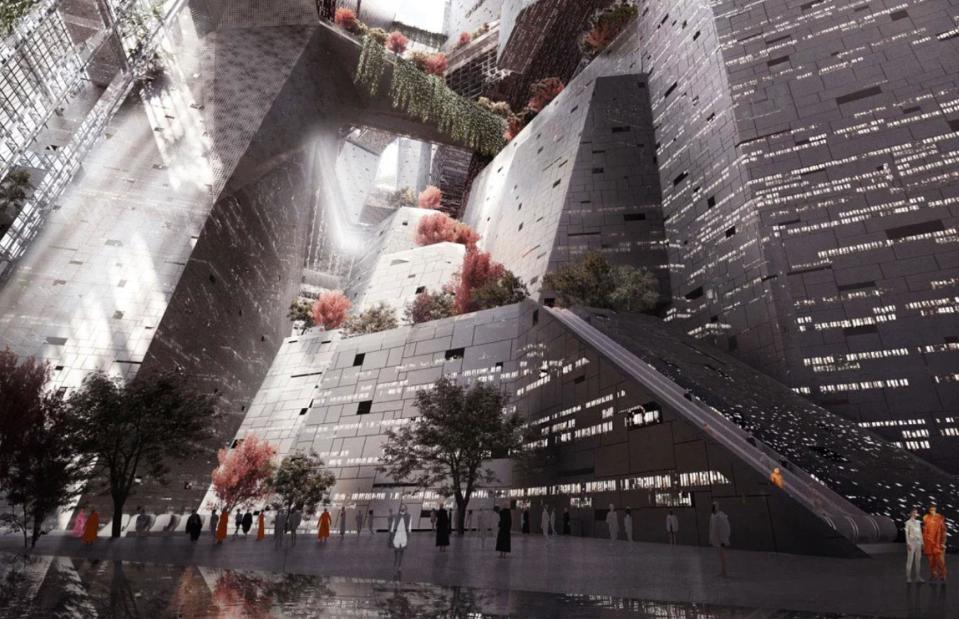
Courtesy Neom
Meanwhile, privacy campaigners suggest Neom risks becoming a mass-surveillance dystopia. AI-powered smart technology – including facial recognition that will likely be provided by authoritarian China – will pervade the megaproject, constantly harvesting data about its inhabitants.
"In a country like Saudi Arabia where there is no data protection or safeguards, no oversight, no accountability, no transparency, no separations of powers, and the fact that MBS (Mohammed bin Salman) is actually ruling the security agencies... it's a scary idea," Marwa Fatafta, a policy manager at digital rights organisation Access Now, warned Insider in April 2023.
In addition to that, sustainable city expert Melissa Sterry has told Metro that the design of The Line might end up creating a "monotonous, prison-like" environment.
Saudi megaproject fails
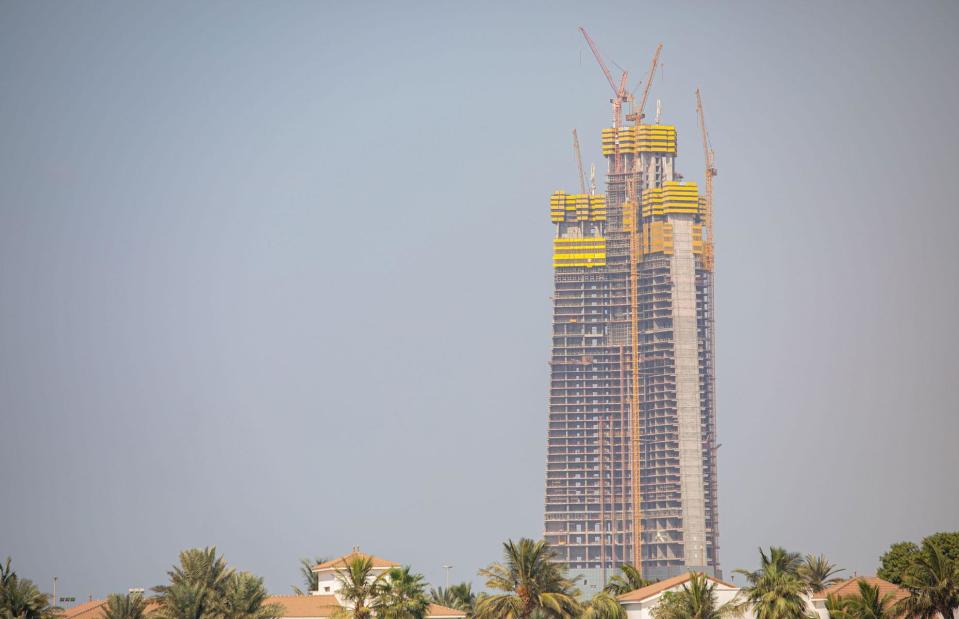
Leo Morgan/Alamy
Some commentators expect that Neom will fall way short of expectations if Saudi Arabia's track record for megaprojects is anything to go by.
Jeddah Tower (pictured), slated to be the tallest building in the world, languishes unfinished, as does the King Abdullah Financial District, which was originally meant to be Saudi Arabia's answer to the Dubai International Finance Centre.
Today, King Abdullah Economic City, which was meant to house two million people, is currently home to just 10,000.
Neom's unfeasibility
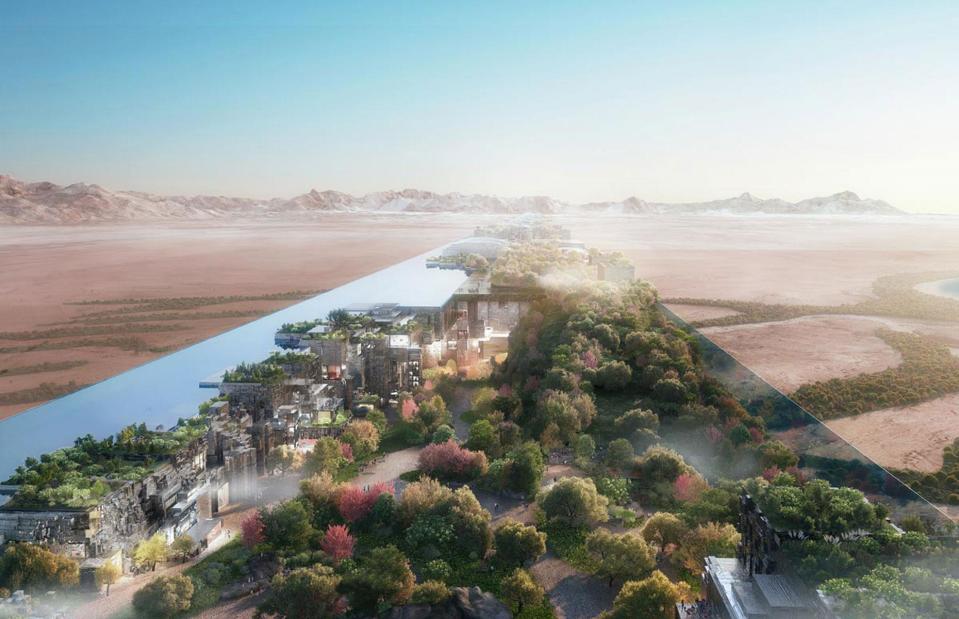
Courtesy Neom
A long list of experts feel the megaproject is unrealistic and unlikely to happen in its entirety.
Climate change is making the region Neom will inhabit too hot for humans, so building a metropolis in such an inhospitable location seems questionable. In addition, much of the technology required for the megaproject is unproven or hasn't even been invented yet.
In May 2023, one of the experts working on Neom, the British architect Peter Cook, called the height of The Line "a bit stupid and unreasonable", admitting that he thinks only a "bit" of the project will actually be completed. (As reported by Dezeen.)
Neom's chances of ever being completed
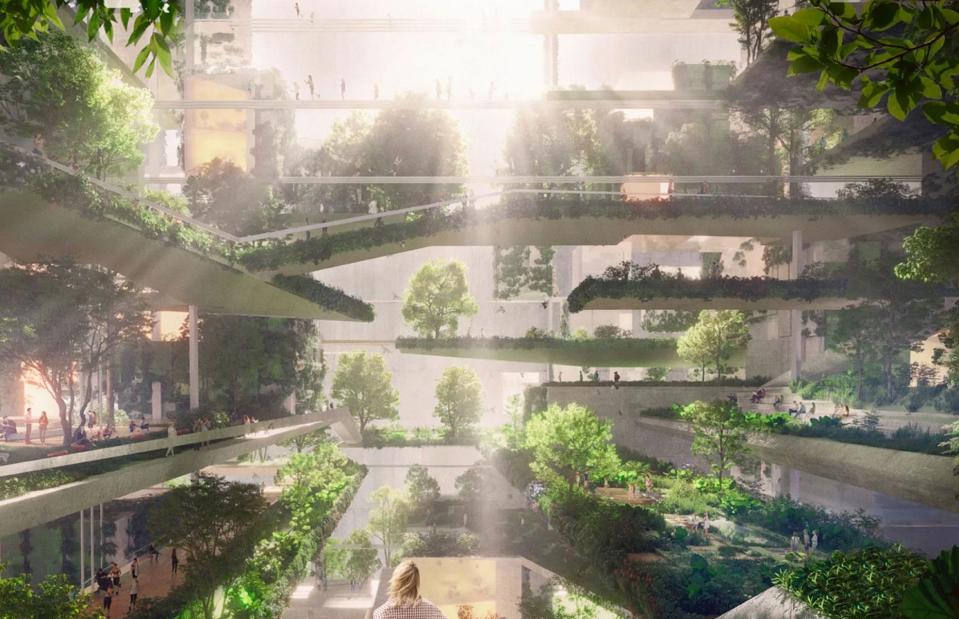
Courtesy Neom
However, sentiment isn't entirely negative.
Steffen Hertog, an associate professor at the London School of Economics, says Neom's chances of coming to fruition are strengthened by its strong political backing in a country where just one person, the Crown Prince, calls the shots. And it's been reported that a decent 20% of the megaproject has already been completed.
That said, there's been talk of budget cuts and streamlining the royal's plans if oil revenues flounder. And with foreign investment lacking due to concerns about human rights, ecology, privacy, and the project's feasibility, the likelihood of Neom ever being finished in its entirety – and on time – seems increasingly unlikely.
Now discover more futuristic cities that may or may not be built

 Yahoo Finance
Yahoo Finance 